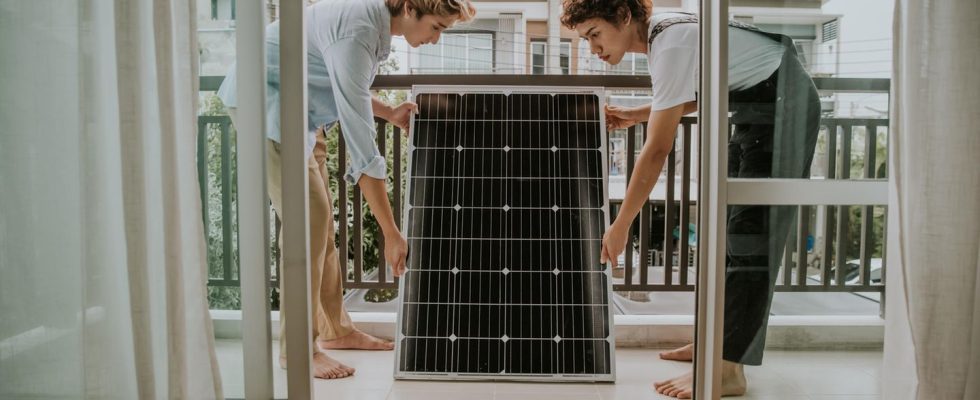Installing a plug-in balcony power plant is actually not difficult. However, there are a few mistakes that users make again and again. We’ll explain what these are and how they can be avoided.
With a balcony power plant you can easily generate your own electricity and save money in the long run. In order for this to work optimally, the system should be installed professionally. Ready-to-plug complete sets are now available everywhere, and they are quick and easy to install. But that doesn’t mean that the installation is always error-free. A few mistakes are made again and again during assembly – if you inform yourself in advance and avoid them, you will get the best out of your system in the future.
1. The location of the balcony power plant is the be-all and end-all
The most common mistake is placing the balcony power plant in the wrong location and therefore not getting enough sunlight. The fact is: Even the smallest shading causes losses in electricity yield. After all, the areas of the mini PV systems are not particularly large – so every single ray of sunshine counts here. Before users get annoyed about the yield being too low, the space for the installation should be carefully considered in advance. Of course, the south side of the house is better than the north side. In addition, trees and other houses can shade the solar module during sunny hours. If there is no suitable sunny spot, the purchase of a balcony power plant should be carefully considered.
Click here to see the balcony power plant offer at Kleines Kraftwerk
2. Reverse running electricity meters
Old electricity meters with a turntable usually run backwards as soon as the mini photovoltaic system generates too much electricity that cannot be used in your own household. However, this is not allowed. To avoid disputes with network operators, a meter with a backstop or a bidirectional meter is required. A meter change can be ordered directly from the network operator; digital meters are often already installed, which will be mandatory in the future anyway.
Click here to find a complete set on Amazon
3. The four meter rule
Certain building standards stipulate that from a height of four meters (i.e. from around the second floor) only balcony power plants without glazing may be installed. There is a simple reason for this: If the glass breaks during a storm or for other reasons and falls from a height, it becomes a danger to people, animals or parked cars. There are also plastic variants that do not require glazing and are usually more flexible and easier to handle. The disadvantage is that these models are often a bit more expensive. However, the balcony power plant without glazing can also be safely installed above four meters.
Click here to find a plug-in solar system on Ebay
Error-free installation – pay attention to the right conditions
Even with a complete set that is ready to plug in, a few requirements must be met before it can be put into operation. In addition to the above, this also includes registering with the Federal Network Agency in the market master data register. Another important basic requirement is a socket on the balcony, which can still be retrofitted if necessary. Furthermore, the capacity of the mini PV system is currently limited to 600 watts, but this is expected to be increased to 800 watts in the course of 2024 – an 800-watt inverter that can be throttled to 600 watts is therefore a good option . Other requirements to consider:
- The cables in the apartment should be secured and there should also be a residual current circuit breaker.
- The inverter must have grid and system protection.
- If you want to be on the safe side, you should also get the homeowner on board and let the network operator know.
This article contains so-called affiliate links. Further information are available here.

